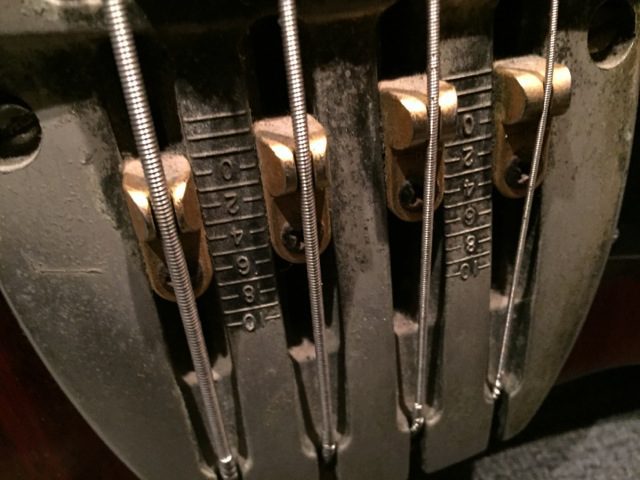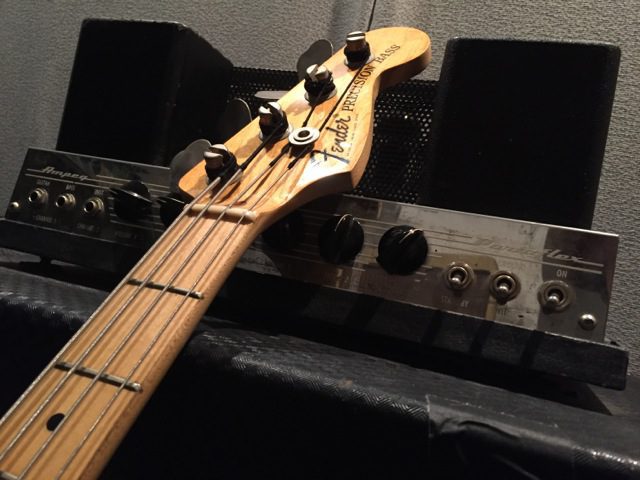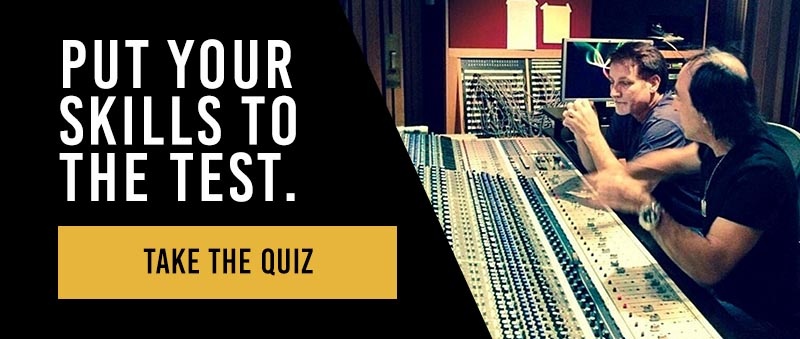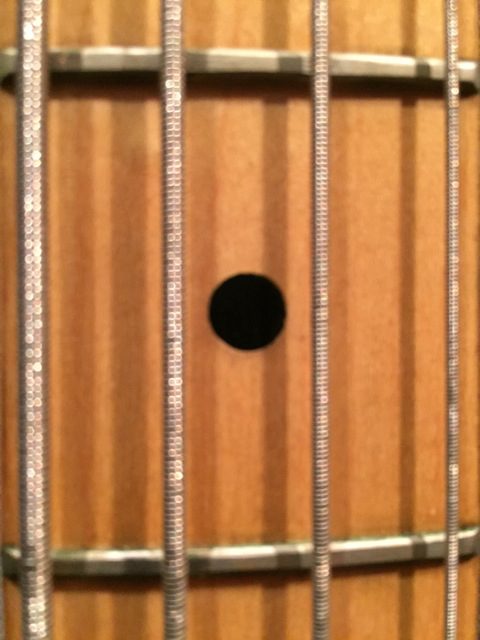Bass guitar recording is an important skill. The bass provides the harmonic foundation for the music and helps form the rhythmic pulse. It can create the signature sound – for example, the Led Zeppelin song “Ramble On” – which caused me to take up the instrument in 1970.
As with the recording of any instrument, every factor contributes to how it works musically: the song, style, context, player, what they’re playing with, everything about the instrument and amp, the recording and processing chain.

Start with a “vision” for how the sound will work in the overall context: the song, the genre, intended audience, and perhaps the primary intended playback system: earbuds, speakers, dance club, etc. Along with the musicians and producer, develop a target sound, making all the other decisions easier.
As I’ve said: “how do you get a great recording? Make a great sound, and capture it well.” The fastest and best way to a great bass sound is to have a great player and instrument. There are so many variations: the player’s technique- whether they play with a pick (and what gauge and hardness), fingers (tips or nails), thumbs/popping, where they pluck the string (closer to the middle gives more low end, closer to the bridge more high harmonics).
“How do you get a great recording? Make a great sound, and capture it well.”
A skilled player will make your life easier, controlling their volume, choice of octave, level of busyness, correcting with their technique for volume variations between notes. Be sure to place them where they have good eye contact with the drummer and that the headphone mix sounds great — consider having the bassist in the control room, where they can feel the low end.
The Instrument
The instrument itself is critical: fretted/fretless, how many strings (four or five typically, some with more). Also, basses with octave strings such as 8-string or Tom Petersson/Cheap Trick 12-strings can really fill in a track. There are other variations: acoustic bass guitars, bass ukes, etc.
Strings range from flats to roundwound. If you wonder where the bass sound from classic ’60s songs like “God Only Knows” come from, that would be flatwound strings, played with a felt pick and damped with a piece of foam rubber or sponge.
Don’t change strings the night before your session! They need to stretch, and the tone changes during the early stages. Make sure the intonation is properly set. No matter how great the playing is, out-of-tune bass notes can skew the tonality of the entire track- unless it’s real punk rock, in which case it shouldn’t be overly in tune!

Pickups, Direct inputs, and Pedals
Pickup choice and selection affect everything. Hard though it may be to imagine, the volume and tone knobs actually go counterclockwise, and there is a spectrum of tones to be had by experimenting with different settings. The simplest way to capture bass guitar is by plugging into a direct box, surprisingly the method used on many Motown recordings. Naturally, this eliminates bass leakage into other mics. There are various DI’s: tube/solid-state, active/passive, mic and/or line-level output, etc. They all work and sound different, partly depending on the impedance load they present to the instrument’s electronics. DI recording gives the option of reamping or using an amplifier simulator plugin. Pedals can be employed — distortion, octave, compression, EQ, and so on, and the post- pedal signal can be run direct. Start with the player’s usual sound and settings, and adjust if necessary.

The Amps
Next in the chain is a bass amp. Once again, there’s a huge variety of choices. There’s everything from live rigs like an Ampeg SVT and the studio staple Ampeg B15 to smaller amps and guitar amps (taking care not to blow their speakers). As with guitars, an amp doesn’t need to be cranked to get a big sound.
Find a tone you like, but don’t rely on its sound in isolation — listen in the context of the song. Bass, especially, sounds radically different by itself than with the rest of the instrumentation. Often you’ll need a brighter sound than you think for the mids and top end to speak amongst the guitars and everything else in those higher frequency ranges.
Microphones
Microphone choice represents another spectrum, from a good ole SM57 to Neumann FET47. Large-capsule condensers, ribbons that have a lot of proximity effect, EV RE20, Beyer M88 — there are so many choices. Put up whatever mics you have available to compare, mix and match.
Click here to read about our favorite drum mic choices!
I usually mic the edge of the speaker dust dome, close to the grille cloth. It’s brighter at the center. Sculpt the tone by having an assistant turn the mic off- and on-axis, or consider a Dynamount mic positioning robot, which not only works well but impresses your clients. Micing further back allows the long bass wavelengths to develop better, sometimes giving a better-balanced tone. Distant micing bass guitar is rarely done but was highly effective on some U2 recordings.

Signal Chain
Signal chain is important too, though as gearheads we often over-emphasize it. Tube and solid-state preamps, EQ as needed, and of course the medium we record to. Most important in the electronic chain is the compressor, which can affect the tone and especially the timing and feel. Careful adjustment of the attack and release controls is necessary; the attack to control the transient character and adjust the timing relative to the bass drum, and the release to keep notes solid longer, make the song pump, etc.
If you record multiple sources — a DI and/or multiple mics, check the polarity and phase. Try inverting one, and choose the setting with more low end (or whichever sounds better)! You can experiment with moving the timing of a DI and microphone to time-align them. Also, the Little Labs IBP (In-Between Phase) does wonders. Little Labs also makes a great low-end processor called the VOG, highly useful for shaping bass guitar and bass drum and helping them mesh.
Happy sculpting!


